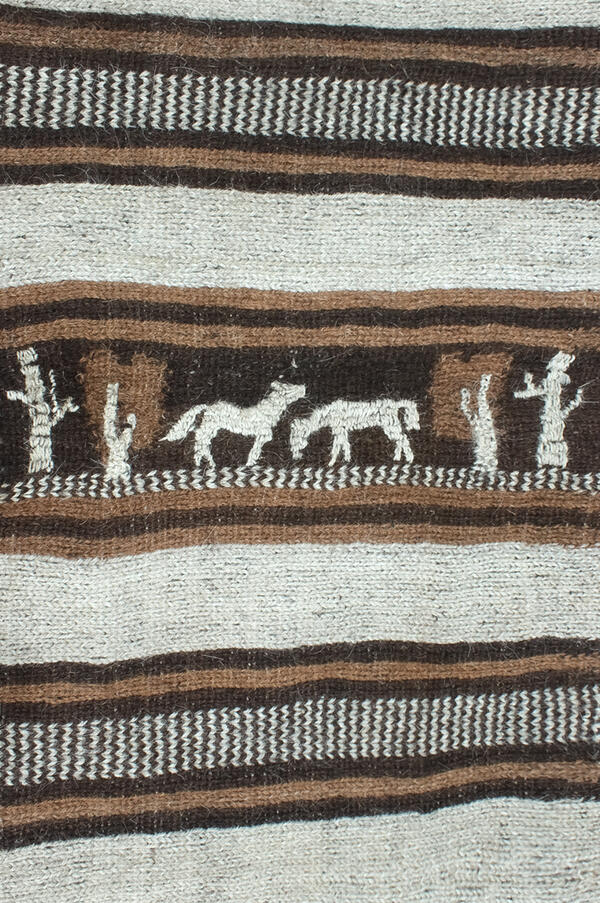Horsehair is one of the oldest materials, which Yakuts have learned to perfectly process. They found an extensive use for it — from making hats to weaving seines.
The Turki used horsehair in ceremonies and rituals, believing it to have great magical and healing power. Products made of it, such as mats, horse harness elements, like reins, belts, saddle girths, halters, snares, and nets, were produced in various techniques: mosaics, appliqué, roving, and weaving. They are durable and practical, resistant to sunlight, moisture and frost.
The manufacturing technology was quite painstakingly difficult, requiring patience and time. First, the artisans cleaned and dried the hair, then selected colors. Combinations of natural white, black, brown and gray tones were used to create a geometric decorative pattern of zigzags and stripes; rhythmic sequences that filled the whole field were carefully thought through. The improvisational talent of artisans showed itself in the color combinations of the pattern, which was built on the contrast of light and dark.
The mats with clear pattern lines not only decorated the modest interior of a Yakut balagan winter dwelling, but were also functional and durable.
In the mid-20th century, many of Yakutia’s folk-art traditions were partially forgotten. Evdokia Pinigina, a hereditary craftswoman from Khadarsky settlement, was one of the first in the republic to revive the labor-intensive craft of hand horsehair weaving.
As a teenager, Evdokia Pinigina worked on the collective farm and at the butter factory, was a foreperson of the vegetable gardening brigade. During the Great Patriotic War, when her husband went to the front, she was left alone with four children. She was engaged in weaving mats from horse hair and reeds, selling them or exchanging them for food.
Evdokia Pinigina returned to her craft when she
retired. She mainly wove mats and pieces of horse harness. In terms of the
method of weaving, specific features of decorative patterns and reticent
colors, her works are close to those of her ancestors. At the same time Evdokia
Semyonovna invented her own method of weaving chess patterns, introducing
pictures from folk life into the artistic framework of the product.



